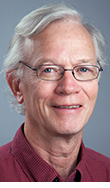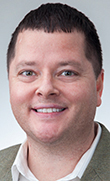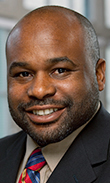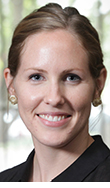Student-gathered data aiding coastal vulnerability research

Philip Berke

Galen Newman

John Cooper

Jaimie Masterson
A group of students who attend Furr High School, which serves an east Houston industrial area prone to air pollution and flooding, are gathering local environmental data with help from Texas A&M urban planning faculty and graduate students.
Together they are helping citizens become active participants in avoiding, enduring and recovering from natural and environmental hazards as part of the [Resilience and Climate Change Cooperative Project] (http://www.tamug.edu/iscc/RCCCP_Home.html) , a multiyear, research engagement led by researchers at the Texas A&M [Institute for Sustainable Coastal Communities] (http://www.tamug.edu/iscc/) .
Graduate Texas A&M students from urban planning programs and the School of Public Health partnered with high school students last fall at a meeting of Furr’s Green Ambassadors, a student group seeking to improve the environmental conditions in east Houston.
In a 2005 Houston Chronicle [report] (http://www.chron.com/news/article/Chronicle-cross-county-study-reveals-risky-load-1643020.php) , the air quality in Manchester, a neighborhood just outside of Houston’s Loop 610 East surrounded by petrochemical plants, where the students are gathering data, is “like sitting in traffic 24/7” with toxin levels “high enough to trigger a full-scale federal investigation.”
The Texas A&M students made four visits to Furr to train the school’s Green Ambassadors as “citizen scientists.” They learned how to record flooding locations in Manchester after heavy rains, test the floodwaters for toxic compounds, and assess the quality of the neighborhood’s storm water drainage infrastructure.
The high school students also learned how to use geographic information systems software to record where their measurements were made.
The Texas A&M trainers were Tiffany Cousins, a [Master of Urban Planning] (http://laup.arch.tamu.edu/academics/graduate/mup/) student, Marccus Hendricks, a Ph.D. in [Urban and Regional Sciences] (http://laup.arch.tamu.edu/academics/graduate/ursc/) student, and Garett Samson, a Ph.D. Epidemology student.
The students’ research findings will be used to inform recommendations for Manchester’s future growth schemes, community design options and storm water infrastructure development.
In December, the Green Ambassadors meet other RCCCP researchers at Texas A&M and toured the College of Architecture visiting a landscape architecture studio and the green roof project atop of the Langford A Building.
The meetings between the Furr students and RCCCP researchers were facilitated by John Cooper, associate professor of practice and director of the [Texas Target Communities] (http://ttc.arch.tamu.edu/) program, and Jaimie Masterson, TTC coordinator. TTC is a Texas A&M program that aids groups and municipalities that lack urban planning resources available to large cities.
The project is funded by the College of Architecture’s High Impact Interdisciplinary Fund, the RCCCP, and TTC.
The RCCCP effort is part of a larger study undertaken by researchers in Texas A&M’s Institute for Sustainable Coastal Communities, which seeks research-based solutions to environmental problems experienced in coastal developments.
In the ISCC study, Philip Berke, professor of urban planning and ISCC co-director, and Galen Newman, assistant professor of urban planning, are investigating flooding and pollution problems in the watershed of Houston’s Sims Bayou, a major municipal runoff drainage channel that includes the Manchester neighborhood.
Their research aims to identify people and structures in the watershed vulnerable to flooding and sea level rise and compare those findings to vulnerability in other parts of the city. This, they said, will be the first step in helping those communities understand the social and physical context in which a disaster occurs.
The study, said researchers, will aid vulnerability assessments of neighborhoods affected by hazards.
“Meaningful community involvement will help raise awareness of the watershed’s risks and motivate community members and organizations to act,” said Berke and Galen in their research proposal. “We will strive to apply the knowledge developed from our work in Houston to support research, community engagement, and educational activities throughout the U.S. Atlantic and Gulf coasts.”
Tags
- feature
- graduate work
- interdisciplinary
- landscape architecture & urban planning
- outreach
- partnerships
- planning
- research
- technology
- texas target communities
- ttc
Related Posts

Texas A&M research transforming urban school, community

Nigerians receive LAND students’ plan for medical city

Teens blog about their home county in TTC initiative

TTC helping small towns make plans
Follow Us
Facebook Twitter Vimeo Youtube Flickr RSS
Recent Posts

Planning prof heads study of disaster housing aid

A message from the dean

Former student remembered as expert planner

Leading educator named new head of Architecture Dept.













_thumbnail_small.png)
